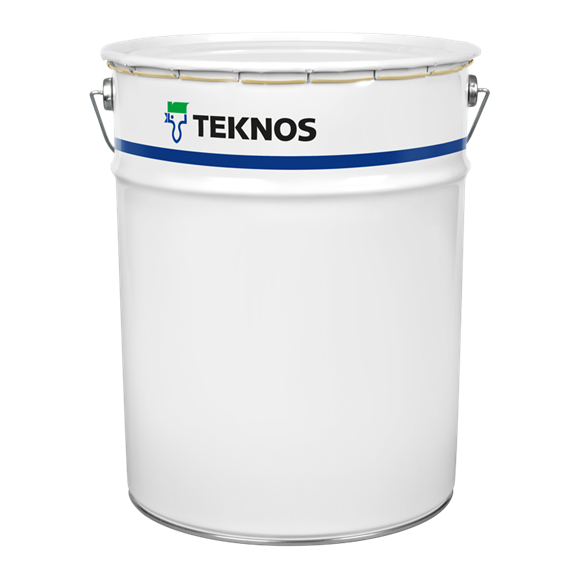TEKNOPLAST HS 150
Epoxy paint
- Chemical resistant
- Wear resistant
- 2-component
- Solvent-borne
- Primer
- Topcoat

- Chemical resistant
- Wear resistant
- 2-component
- Solvent-borne
- Primer
- Topcoat
TEKNOPLAST HS 150 is a low solvent content two-pack epoxy paint.
Intended to be used as a primer and top coat in abrasion and chemical resistant epoxy coating systems and also in a maintenance system. The paint has good adhesion onto bare zinc, aluminium, thin-plate and acid-proof steel. TEKNOPLAST HS 150 produces a thick coating that is resistant to chemicals. It is suitable on internal and external surfaces as well as on subterranean and submerged steel structures. The paint comes up to the specifications of Swedish Standard SSG 1026-TD. TEKNOPLAST HS 150 is used as a steam-proof coating on concrete. The water vapour permeability is determined by the Technical Research Centre of Finland (Research Report No. RAT6640). It is well known that epoxy paints will yellow and chalk. Furthermore it must be noticed that inadequate mixing, incorrect mixing ratio, combustion gases or taking the partially cured paint outside may result in an uneven discolouration. White and light shades (e.g. RAL-9001, RAL-9003, RAL-9010 and RAL-9016) are especially susceptible for yellowing. TEKNOPLAST WINTER HARDENER 7212 is to be used when painting at temperatures below +10°C. Using the WINTER hardener will strengthen the yellowing and chalking that is typical for epoxy paints.
Technical data sheet
Safety data sheet
Other product specific documents
Surface preparation
Application
Application conditions
Storage
| Total mass of solids | abt. 1050 g/l |
|---|---|
| Volatile organic compound (VOC) | abt. 300 g/l |
| Pot life | 4 h (+23 °C) |
| Pot life, +23°C | +23 °C: 4 h +30 °C: 1.5 h +40 °C: 45 min |
| Mixing ratio | 4:1 by volume (comp. A : comp. B) |
| Hardener | Comp. B: TEKNOPLAST HARDENER |
| Gloss | Semi-gloss |
| Tinting system | Teknomix;Teknotint |
| Practical spreading rate | The values depend on the application technique, surface conditions, overspray, etc. |
| Drying time – dust free | 30 min (ISO 9117-3:2010) |
| Drying time – touch dry | 5 h (ISO 9117-5:2012) |
| Drying time – fully cured | 7 d |
| Thinner | TEKNOSOLV 9506 |
| Clean up | TEKNOSOLV 9506 or TEKNOSOLV 9530. |
| Colours | Same tinting system should be used during the whole painting project. Factory colours by agreement. |
| Safety markings | See safety data sheet. |
| Approvals & certificates | SSG 1026-TD,VTT (Finland) |
| Gloss value | 10-50 |